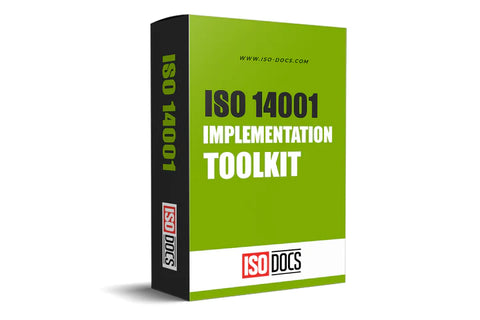Environmental Evaluation Report Template
A sound environmental management system (EMS) must be based on the procedure for identification and evaluation of environmental aspects and risks associated with the company's activities, products, or services. This helps the company determine which of its activities, products, or services have the potential to cause significant environmental impacts and thereby prioritize EMS activities. Therefore, a company must systematically collect information about its activities, products, and services to identify environmental aspects and risks. This can be done through various means, such as data gathered from field studies, emissions data, customer feedback, etc.

How To Quickly and Effectively Identify Environmental Risks In Your Business?
As a business owner, you have a responsibility to protect the environment. Unfortunately, many businesses unintentionally cause environmental damage due to a lack of knowledge about the risks involved in their operations. To avoid causing harm to the environment, it is essential to identify and assess the environmental risks associated with your business. This can be done by following the process of a few steps.
- The first step in conducting an environmental risk assessment is identifying the potential sources of environmental damage in your business. It includes things like emissions from your manufacturing process, the use of toxic chemicals, and waste from your office or factory.
- Once you have identified the potential sources of environmental damage, you need to assess the risks associated with each one. It will help you determine the steps you need to take to mitigate the risks and protect the environment. There are several different methods you can use to assess environmental risks. One popular method is known as the Risk Matrix. This tool allows you to identify and evaluate the risks systematically associated with your business.
- Another popular method is the Environmental Impact Assessment (EIA). This approach requires you to consider the potential impacts of your business on the environment and then identify the steps you need to take to minimize those impacts.
- Once you have identified and assessed the risks associated with your business, you need to develop a plan to mitigate those risks. It may include installing pollution control equipment, changing your manufacturing process, or implementing waste management procedures.
Once you have identified the environmental aspects of your organization, you need to evaluate them. This evaluation should include an assessment of the risks and impacts of each element. It would help if you also considered the likelihood and severity of each effect. This evaluation's results will help you prioritize the aspects that need to be addressed in your EMS.
To effectively identify and evaluate environmental aspects, businesses and organizations should:
- Conduct a review of their operations to identify all of the activities that could have an impact on the environment.
- Identify which activities are significant regarding their potential environmental impact.
- Evaluate the risks and impacts associated with each significant activity.
- Select appropriate control measures to mitigate any negative impacts.
- Monitor and review the effectiveness of the controls periodically.
How Do We Implement Environmental Aspects And Risks Procedure?

Many organizations have environmental elements and risks that need to be managed. An environmental aspects and risks procedure sets out how an organization will address these aspects and risks. It should be tailored to the organization's particular circumstances.
An environmental aspects and risks procedure should:
- Be designed to ensure compliance with relevant environmental legislation and regulations.
- Set out the responsibilities of those who identify, manage and communicate information about environmental aspects and risks.
- Set out how environmental aspects and risks will be identified, assessed, and prioritized;
- Describe the methods used to communicate information about environmental aspects and risks.
- Set out the methods that will be used to control environmental aspects and risks; and
- Describe how the procedure will be reviewed and updated.
Instructions To Use This Template
All yellow indicated numbers in the Environmental Evaluation Report need action to be taken. Below are the details:
1. Provide the Revision History of the document
- Revision Number: in the order of 00,01,02, etc.
- Date: Revision Date of Document in dd-mmm-yyyy.
- Prepared By: Name of the person who prepared the document
- Reviewed By: Name of the person who reviewed the document after revision
- Approved By: Name of the person who approved the document after revision
- Description: Describe the revision
3. Insert either MR or Any Designated Officer by the organization
4. Fill the Context of the organization table
- Type of Issue – Write either Internal or External as per the issue
- Issue Type – Write the issue concerning the type of issue selected. If the kind of issue chosen is Internal, then the problem can be the performance of the organization about EMS Objectives
- Impact – Provide the effect the issue can have on the organization as concerning the example provided above; it can be the regulatory impact or losing customer base
- Control – Control measures are provided to keep the impact listed under check, such as, for the above example, it can be monthly monitoring and review with top management.
- Category - Write either Internal or External
- Interested Party – Provide the interested party's name, such as Workers, managers, etc.
- Needs – List the needs of the interested party, such as workers, that will comply with environmental rules.
- Expectations – List the expectations of the interested party, such as for workers, it may be providing training and awareness on Environmental practices
- Control – List the power in place to ensure the needs and expectations of the interested party are met, such as ensuring the training calendar is reviewed for adherence, etc.







